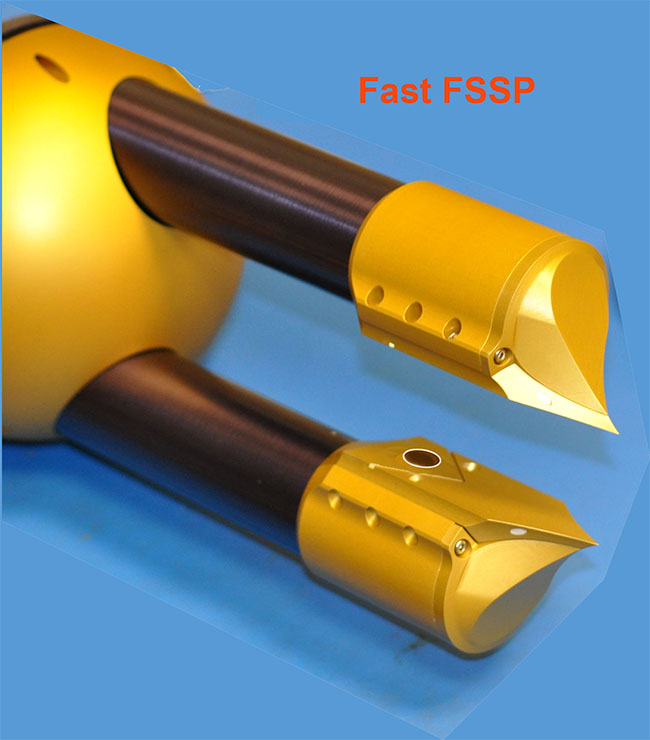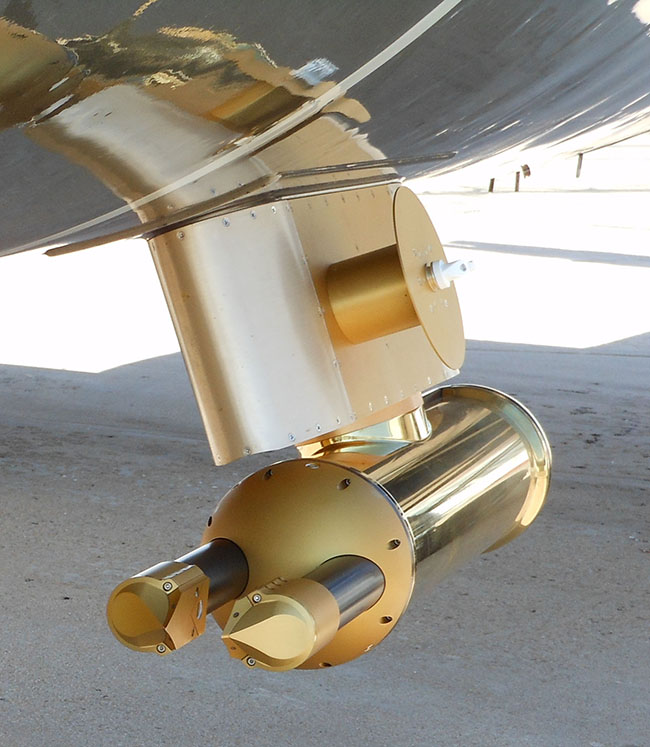Fast CDP and Fast FSSP with Tips Designed to Reduce Shattering
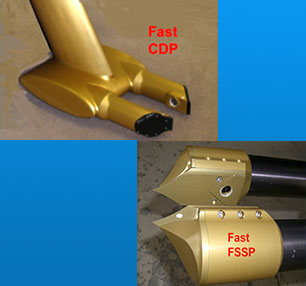
SPEC has developed a Fast Cloud Droplet Probe (FCDP) with state-of-the-art electro-optics and electronics that utilizes forward scattering to determine cloud droplet distributions and concentrations in the range of 1.5 to 50 microns. The new electronics include a temperature controlled fiber-coupled laser, FSSP-300 optics with pinhole limiting depth of field (Lance et al. 2010), a field programmable gate array (FPGA), 40 MHz analog-to-digital-converter (ADC) sampling, custom amplifiers, a very small and low power Linux based 400 MHz processor and a 16-Gigabyte flash drive that stores data at the probe.
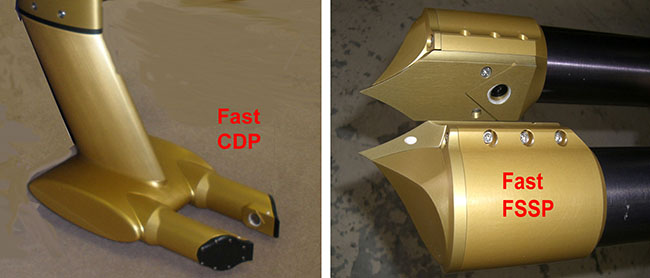
SPEC Fast CDP (FCDP) and Fast FSSP (FFSSP) with tips designed to reduce shattering.
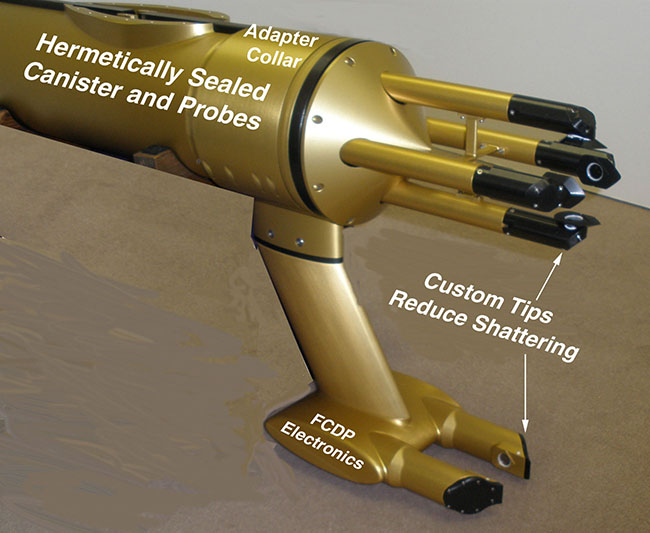
FCDP installed with adaptor collar in a PMS-style canister with a 2D-S probe.
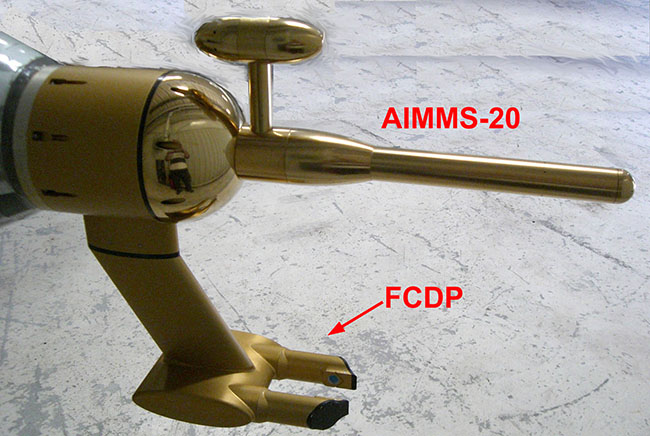
FCDP coupled with an AIMMS-20 probe in a PMS-Style canister installed in the tip tank of the SPEC Learjet.
The SPEC FCDP has the following advanced features:
- Hermetically sealed probe capable of operation in environments up to 70,000 ft. msl.
- Redesigned amplifier chain to drastically reduce the offset errors associated with AC coupling and baseline restoration circuitry. Initial tests and simulations show a decrease in baseline drift by a factor of 100. High concentrations are not expected to alter the measured size distribution.
- Particle by particle data are collected for every particle in real time; i.e., the arrival time, transit time and pulse height of both the signal and qualifier pulse for each particle are recorded. Each particle is time-stamped with 25 nS resolution using 40-bit counters that will not roll over during a flight (i.e., 1954 continuous flight hours to fill the counter). The number of DOF disqualified particles between DOF-qualified peaks is also counted. Recording individual particle statistics, especially arrival times, can be used to eliminate closely spaced particles that may be the result of particles shattered on the probe inlet.
- Complete digitization of selected particle signal and qualifier pulses (i.e., the ADC samples during the particle transit through the sample volume producing a digital oscilloscope representation of both the signal and qualifier pulse). These data are stored for analysis in post-processing. See figure below.
- All electronics including the FPGA and Linux processor are housed within the probe. All data are stored on a flash drive in the probe, eliminating the need for a computer data system. Ethernet connection to the probe supports reprogramming and upgrades, and also supports transport of data to an external data system, if desired.
- The figure below shows a time series of particles recorded by the instrument. This series is recorded in addition to the peak values discussed in item 3, above. The time series is the voltage vs. time recorded as particles pass through the sample volume. Both qualified and unqualified particles are sampled. In the time series shown, 4 out of 15 particles are DOF qualified such that the signal voltages (blue) are greater than the qualifier voltages (black).
FCDP TECHNICAL SPECIFICATONS AND CHARACTERISTICS
- FCDP installs standalone or on a custom adaptor collar attached to a standard PMS airborne canister.
- Power and data interfacing via standard PMS FSSP cable at up to 100-foot cable lengths. Ethernet data transfer rate may be 10 BASET or 100 BASET, depending on existing wiring and installation. 100 Mbps guaranteed with Cat5 or better cable.
- Power: 250 watts of 115VAC, 400 or 60 Hz, and <100 watts of 28 VDC
- Probe complies with normal requirements for approvals for use on research aircraft.
- Improved baseline restoration circuitry.
- particle arrival time, transit time, signal and qualifier pulse heights recorded.
- and qualifier waveforms recorded for post analysis.
- data recorded at the probe on flash disk and also transmitted to (user supplied) external data system via Ethernet connection.
- Real time data displayed via Ethernet connection.
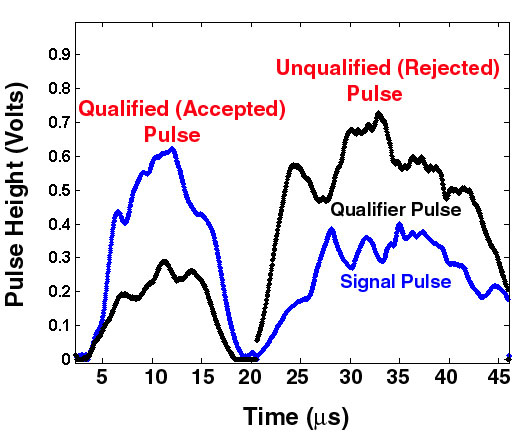
Examples of 40 MHz ADC samples of (blue) signal and (black) qualifier (black) voltages recorded by the Fast CDP. The pulse on the left is accepted because the qualifier peak voltage height is equal to or lower than the signal; the pulse on the right is rejected because the qualifier peak voltage height is higher than the signal. Recording the full waveforms from both the signal and qualifier photodiodes (instead of just the peak values like previous FSSP’s and CDP’s) supports post-processing analysis of potential instrument calibration errors and anomalies.
Fast FSSP-100 Upgrade (FFSSP)
The same electronics used in the FCDP can be retrofit into an existing Forward Scattering Spectrometer Probe (FSSP) along with new probe tips designed to reduce the effects of shattering. The SPEC Fast CDP electronics can be retrofit into FSSP–100, creating an FFSSP. The electronics perform the same functions as the SPEC FCDP. However, the FSSP optics remain unchanged and the probe is not hermetically sealed. The FFSSP is shown in below and installed on the SPEC Learjet. The FFSSP also uses forward scattering to determine the cloud droplet distribution and concentration in the range of 1.5 to 50 microns.
